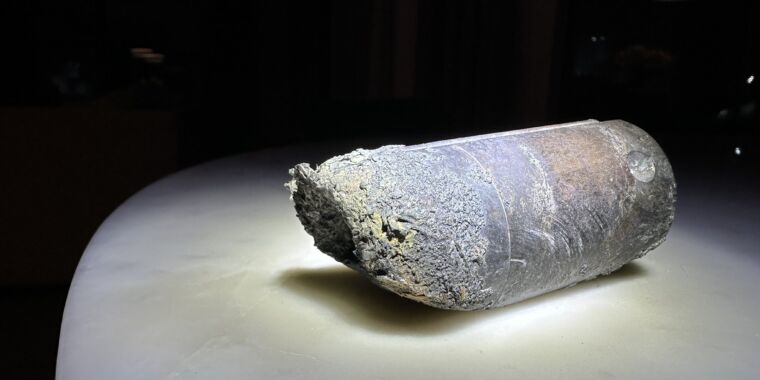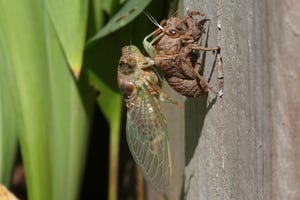Trash from the International Space Station may have hit a house in Florida


Enlarge / This cylindrical object, a few inches in size, fell through the roof of Alejandro Otero’s home in Florida last month.
A few weeks ago, something from the heavens came crashing through the roof of Alejandro Otero’s home, and NASA is on the case.
In all likelihood, this nearly two-pound object came from the International Space Station. Otero said it tore through the roof and both floors of his two-story house in Naples, Florida.
Otero wasn’t home at the time, but his son was there. A Nest home security camera captured the sound of the crash at 2:34 pm local time (19:34 UTC) on March 8. That’s an important piece of information because it is a close match for the time—2:29 pm EST (19:29 UTC)—that US Space Command recorded the reentry of a piece of space debris from the space station. At that time, the object was on a path over the Gulf of Mexico, heading toward southwest Florida.
This space junk consisted of depleted batteries from the ISS, attached to a cargo pallet that was originally supposed to come back to Earth in a controlled manner. But a series of delays meant this cargo pallet missed its ride back to Earth, so NASA jettisoned the batteries from the space station in 2021 to head for an unguided reentry.
Otero’s likely encounter with space debris was first reported by WINK News, the CBS affiliate for southwest Florida. Since then, NASA has recovered the debris from the homeowner, according to Josh Finch, an agency spokesperson.
Engineers at NASA’s Kennedy Space Center will analyze the object “as soon as possible to determine its origin,” Finch told Ars. “More information will be available once the analysis is complete.”
Ars reported on this reentry when it happened on March 8, noting that most of the material from the batteries and the cargo carrier would have likely burned up as they plunged through the atmosphere. Temperatures would have reached several thousand degrees, vaporizing most of the material before it could reach the ground.
The entire pallet, including the nine disused batteries from the space station’s power system, had a mass of more than 2.6 metric tons (5,800 pounds), according to NASA. Size-wise, it was about twice as tall as a standard kitchen refrigerator. It’s important to note that objects of this mass, or larger, regularly fall to Earth on guided trajectories, but they’re usually failed satellites or spent rocket stages left in orbit after completing their missions.
In a post on X, Otero said he is waiting for communication from “the responsible agencies” to resolve the cost of damages to his home.
Hello. Looks like one of those pieces missed Ft Myers and landed in my house in Naples.
Tore through the roof and went thru 2 floors. Almost his my son.
Can you please assist with getting NASA to connect with me? I’ve left messages and emails without a response. pic.twitter.com/Yi29f3EwyV— Alejandro Otero (@Alejandro0tero) March 15, 2024
If the object is owned by NASA, Otero or his insurance company could make a claim against the federal government under the Federal Tort Claims Act, according to Michelle Hanlon, executive director of the Center for Air and Space Law at the University of Mississippi.
“It gets more interesting if this material is discovered to be not originally from the United States,” she told Ars. “If it is a human-made space object which was launched into space by another country, which caused damage on Earth, that country would be absolutely liable to the homeowner for the damage caused.”
This could be an issue in this case. The batteries were owned by NASA, but they were attached to a pallet structure launched by Japan’s space agency.


